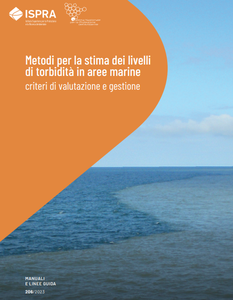Methods for estimating turbidity levels in marine areas evaluation and management criteria
The Guidelines are the result of a synergic action from Authors with different skills and from different Institutes. The document provides an overview of the existing tools to characterize the variability of turbidity in different marine areas (i.e. coastal, confined coastal and offshore).
In particular, it outlines a complete framework supporting the statistical characterization of background turbidity values to provide a representation of the effects of natural and anthropic processes that determine the ordinary turbidity values of a site.
The document tackles the main advantages and limitations of data coming from different techniques (in situ investigation, remote sensing and forecasting models) in order to produce a dataset with a suitable resolution to capture spatial and temporal variability of turbidity.
A key point of the guidelines is the provision of criteria for supporting the management of sediments handling operations. Thus, starting from site-specific environmental and operational criticalities criteria for defining thresholds to assess anomalies during the execution of the interventions are provided. Also, criteria to collect, verify and statistically analyse data set both for characterizing the background turbidity and to set turbidity levels for sediments handling operations are provided.
Publication available only on-line
Download the publication (pdf - 7 mb)

